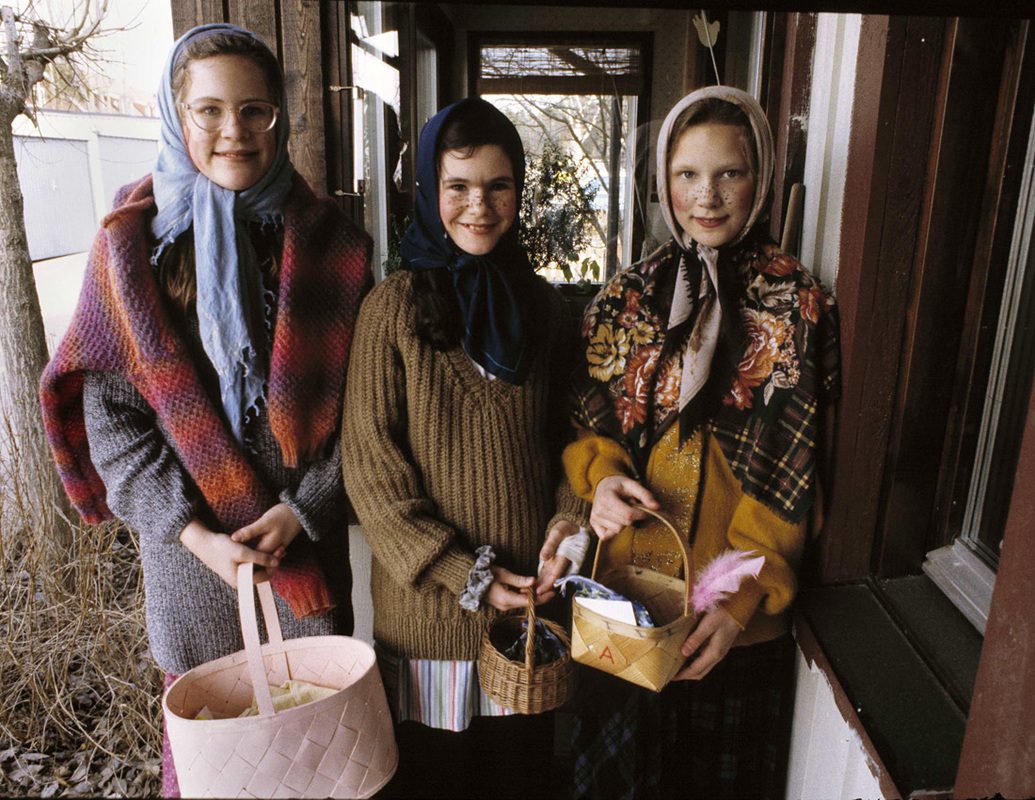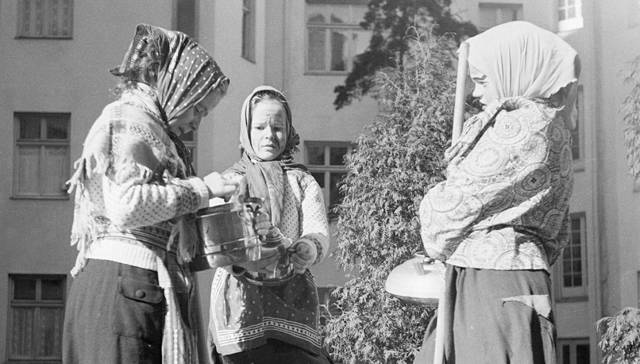Wait, what? Easter? Witches?If that was your reaction, you are not Swedish, sorry! But you might have already known that. If you are Swedish, you know that during the week leading up to Easter, it's common for boys and girls to dress up like Easter Witches.
So what the heck do witches have to do with the crucifixion and resurrection of Jesus? I asked myself that this morning and found a pretty good explanation from Nordiska Museet/ the Nordic Museum in Stockholm. The Thursday before Easter Sunday is Maundy Thursday, the day when Jesus had the last supper with his Apostles. After dinner, Judas delivers his famous kiss to Jesus, denoting who he is to the soldiers which leads to Jesus's arrest and death. In the folk-tradition of Sweden, this got translated to the day that all evil in the world is set free, and so it is the day that the witches fly to Blåkulla to meet the devil. As I learned at Skansen, Swedes before the 1900s were extremely superstitious (there was that whole story about putting a pair of scissors in the crib so the trolls wouldn't steal your baby and replace him with a troll that just happened to look like a human...) So for the day of the witches, Swedes would try to protect themselves from evil by putting out things the witches might need to fly (brooms and shovels), closing doors and windows, and drawing crosses on the barn or putting metal in the hay to keep the witches from messing with the animals. (The last part leaves me wondering if there was some sort of Passover connection, where the Israelites marked their doorsteps in blood so that their sons would be passed-over in the plague against Egypt.)
1 Comment
10/24/2022 04:24:11 am
Small-scale spaghetti lashes body con dress, tight fitted. You gleam contrastingly when you become a terrible lady. Our Bad Gal Mini Dress - Dark will assist you with gleaming more brilliantly than others. Draw out your striking and beautiful style. Be the focal point of consideration at each party and parade your energies with no lament. Be pleased, strong, and delightful. Look pleased, strong, and delightful. This dark terrible lady dress will get it going. The most tasteful mix of dark white and dim will make you stand apart from others.
Reply
Your comment will be posted after it is approved.
Leave a Reply. |
Come in, the stacks are open.Away from prying eyes, damaging light, and pilfering hands, the most special collections are kept in closed stacks. You need an appointment to view the objects, letters, and books that open a door to the past. Archives
April 2023
Categories
All
|





 RSS Feed
RSS Feed